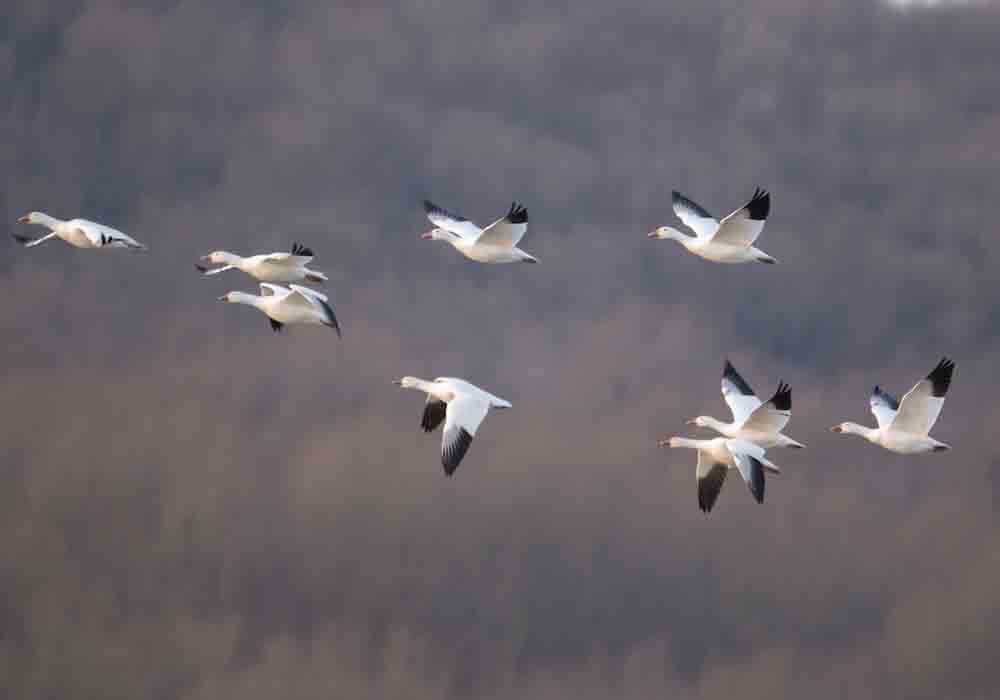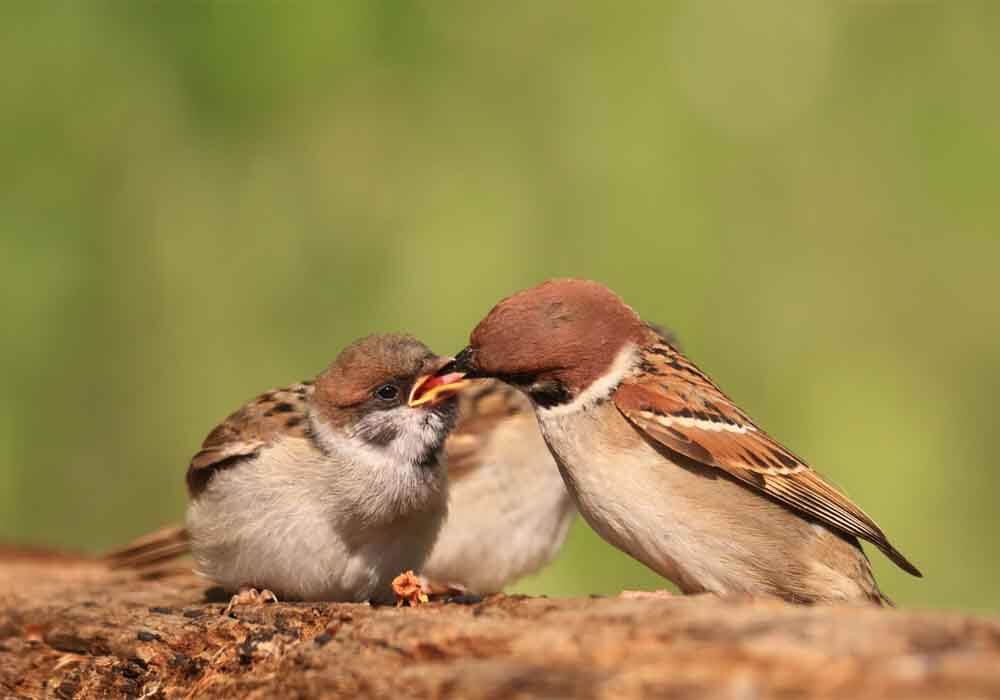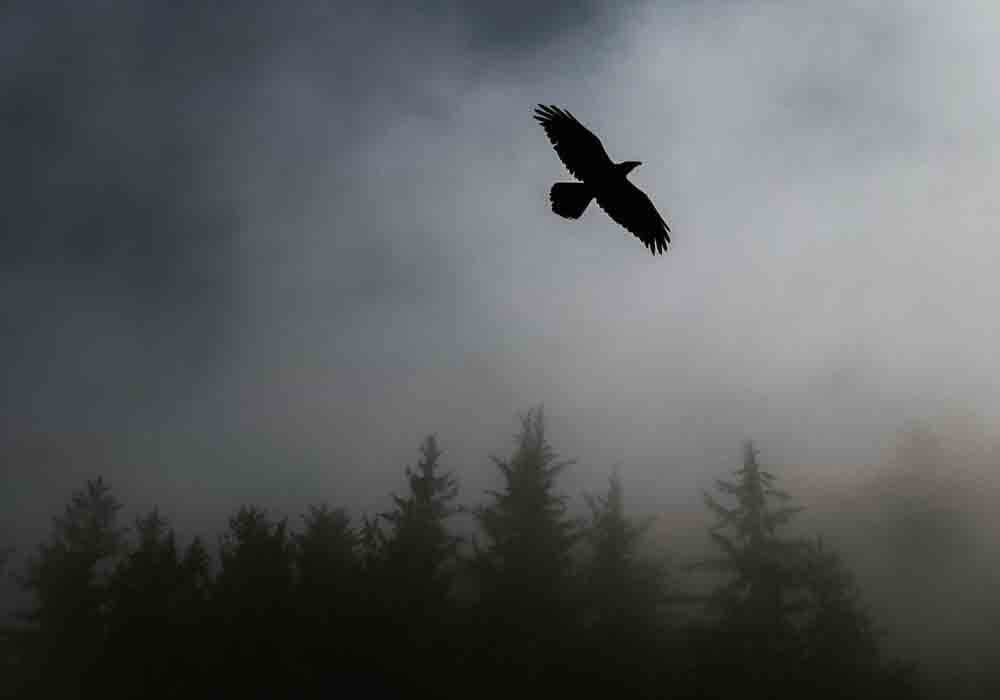How Can Birds Fly Long Distances?
At different times of the year, the blue skies witness birds flying to various locations in search of food, nesting, and mating partners. These birds often travel remarkably long distances, which can total thousands of kilometers annually. So, for the curious mind, how can birds fly long distances without getting tired or landing?
Birds can fly long distances because of their adaptive features. Most birds have firm, hollow, and lightweight bones that help them fly at great heights and for great distances. Birds also boast strong and efficient lungs that take in oxygen and provide them with sufficient energy to keep flying. Many birds also have the ability to soar for hours using little energy.
In the rest of this article, I will explain how a bird’s anatomy, feeding pattern, and weight-saving ability contribute to its mileage. I will also zero in on some birds that cover some of the longest distances and what sets them apart in the avian kingdom.

So How Can Birds Fly Long Distances?
Below are some of the reasons why birds fly such extensive distances.
Special Adaptations
As a child, there's a reason you failed woefully at trying to imitate the flying prowess of your favorite cartoon character. For anything to fly in the air, it has to be lighter than air or at least possess the right combination of lightness and strength. Birds have these two properties and that’s why they can fly. how can birds fly long distances
Migratory birds have strong, lightweight, and hollow bones that help them fly at high altitudes and cover long distances. Since their bones do not contain marrow but air sacs, these birds take advantage of their skeleton's lightness to fly high up in the winds. For example, the ruby-throated hummingbird, which has an average weight of only 5 grams ( 0.17 ounces) can fly long distances for 24 hours without taking a break.
Many birds also possess strong breast muscles that help them cut through the wind and provide the power to move their wings through the same. In addition, their relatively small non-essential organs lighten up their flying load.
Dynamic Feeding Patterns
Migratory birds can change their feeding patterns ahead of long-distance journeys. Many of them can increase their body weight and store up fats in their body before embarking on a trip. The purpose of this reserve is to ensure they always stay full and don’t get hungry mid-flight. This also means that they won’t need to land too frequently.
For instance, one bar-tailed godwit flew for almost 70,000 miles (112,654 kilometers) nonstop without stopping to get food, water, or rest. Other birds, like the shearwaters and terns, can make feeding stops along the way, but the stops are usually far apart.
Weight-Saving Ability
Migrating birds can lose weight from different body parts. It may seem counterproductive for birds to double their weight before going on a long flight. However, migratory birds have a unique ability to shrivel up their liver, kidneys, and digestive system to a fraction of their original sizes.
This weight-saving feature compensates for whatever weight they gain from eating so much food before flying. Therefore, the birds won’t need to exert so much pressure on their wing muscles to keep their fed bodies flying in the air.
If you thought you had heard all there is to know about this unique feature, you thought wrong.
Did you know that when migrating birds eventually reach their destinations, the shriveled organs return to their original size?
Well, that’s what happens after a flight. All organs and muscles return to their original condition like nothing ever happened.
In order to fly long distances birds have to know how to navigate. But how do they do this? This YouTube video explains how...
How Do Birds Fly Without Getting Tired?
Given the incredibly long distances they travel, you would expect migratory birds to get tired after a while. But nothing could be further from the truth.
Birds can travel extremely long distances without getting tired because they have physical adaptations like hollow bones that help conserve energy. Many migratory birds conserve energy and beat fatigue by reducing air resistance, their wingbeats, and sleeping while flying.
Reducing Wingbeats
Birds don’t flap their wings as often as many people think. If they did, they would get tired quickly and may be unable to travel the distances they do.
Many birds only flap when they need to. What they do, instead, is glide for most of their journey. Birds with large wingspans, like the eagle, take advantage of this technique more. Their large wings help them soar in the sky with ease.
The Wandering Albatross is another classic example of a bird that takes advantage of its large wingspan. With wings averaging eleven feet (3.35 m), this Albatross species can fly over 10,000 kilometers (6,214 kilometers) without getting tired.
When birds reduce their wingbeats and employ a gliding movement, their wing muscles do less work. This ability further helps them conserve energy and reduces the chances of getting tired mid-flight.
Reducing Air Resistance
Birds can reduce air resistance by flying close to a body of water. As they glide over the water, the air between their wings and the water surface compresses and acts as a cushion to keep them floating. The result is that the bird won’t need to flap its wings, thus conserving energy.
This phenomenon is known as the ground effect, and it becomes stronger as the bird goes closer to the water. What’s more? If the water is still, the ground effect will become much stronger.
Some birds also fly in groups to reduce air resistance. Birds that fly in a group use teamwork to help each member to get to their destination. For instance, geese often travel in a V-shaped pattern to reduce air resistance. They change their leader periodically to prevent the leading bird from getting tired.
Can Birds Sleep While Flying?
Some migratory birds don’t need to land to get some sleep. They can sleep while flying.
For example, the Alpine Swift can fly for more than five months without landing. Similarly, the gigantic Frigate Bird can fly for two months nonstop. If these birds get “tired” and need to sleep, they do that in the air.
For such birds, one hemisphere of their brain sleeps while the other one focuses on controlling navigation and maintaining balance in the air. The Frigate Bird, in particular, sleeps in short bursts throughout the day. Amazingly, the sum of all their sleep time during a flight is often less than an hour in a day.
Birds That Fly the Longest Distances
There are over 10,000 bird species worldwide, with over 200 of them in the United States. Many of these birds take long trips to different parts of the world each year to escape harsh weather conditions.
Flight distances often vary from one bird species to another. And in some cases, birds of the same species may cover longer distances than others as shown below:
Arctic Terns
Arctic terns hold the world record for covering the longest flight distance. A 2010 study revealed that the Arctic tern covers an average of 44,000 miles (70,811 km) annually.
Every year, the Arctic tern begins its journey from its home in Greenland, heading towards Weddell Sea in the Antarctic region while making stops at different feeding and breeding grounds. Not many migratory birds match the pole-to-pole migration of these birds.
Sooty Shearwaters
Sooty shearwaters are the kings of long-distance flights, flying up to 40,000 miles (64,374 kilometers) a year. Typically, they start their trip during springtime in Falkland Island and head to the Arctic region. They feed here all through summer before flying back to the breeding grounds in the Falkland Islands.
These birds are truly efficient long-distance migrants that take advantage of the ocean winds to travel great distances. They also make fantastic divers, as they can dive as low as 220 feet (67 meters) under the sea to catch fish. Until the Arctic tern flew into the game, the Sooty shearwater used to hold the world title for the longest bird migration. how can birds fly long distances
Red Knots
Red knots are small brown birds with a wingspan of only 20 inches (51 centimeters). But don’t let their small wingspan fool you. These birds have an incredible flight range.
Every year, Red knots make a round trip of over 9,000 miles (14,484 kilometers), starting from Southern America to Northern America and back. So, it’s not surprising that they are one of the top long-distance migratory birds in the world.
Wandering Albatross
The albatross sports the longest pair of wings in the avian kingdom. Thanks to its large wingspan, it can fly above seas for a long time, only needing to flap its wings a few times a day.
The wandering albatross is famed for its remarkable flying range. In a particular study, a gray-headed wandering albatross recorded a complete trip around the earth in 46 days.
The wandering albatross can fly incredibly long distances while using less energy. This bird uses far less energy in flight than when nesting on dry land. The only time the albatross lands on dry ground is when it wants to breed. Albatrosses can stay in the air for nearly five years.
How Can Birds Fly Long Distances ...Conclusion
Birds migrate yearly to escape harsh weather conditions or search for food, shelter, and nesting. Many of them cover remarkably long distances to achieve these goals.
Migratory birds can fly long distances because they have strong wing muscles, hollow bones, and powerful breast muscles that propel them up and forward. They can also double their body weight before a long flight and take advantage of their weight-saving ability to remain in the air.
Many long-distance birds also reduce their wingbeats, decrease air resistance, and sleep while flying. These adaptations help them stay in the air without getting tired.
Back To The TOP Of This How Can Birds Fly Long Distances Page

About the Author...
Richard Worden, a dedicated bird lover for over 20 years, I love to share my in-depth knowledge and passion for birds. Read more About Me and my expertise in this field.
- We Know Birds HOME ›
- Bird Flight and Nesting Facts ›
- How Can Birds Fly Long Distances?



